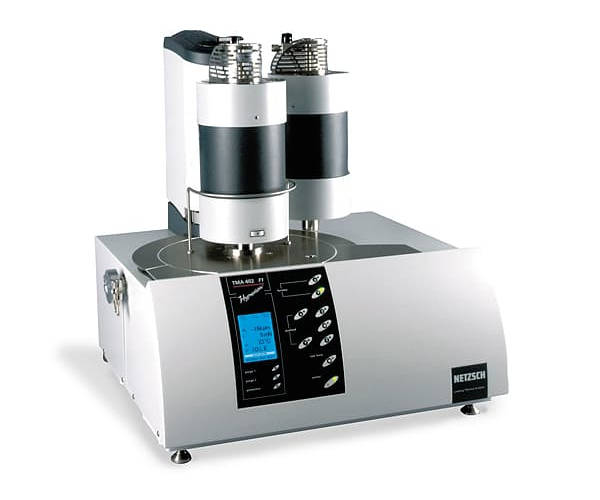THERMOMECHANICAL ANALYSIS (TMA)
Many materials undergo changes of their thermomechanical properties during heating or cooling. For example, phase changes, sintering steps or softening can occur in addition to thermal expansion. TMA analyses can hereby provide valuable insight into the composition, structure, production conditions or application possibilities for various materials. The application range of instruments for thermomechanical analysis extends from quality control to research and development. Typical domains include plastics and elastomers, paints and dyes, adhesives, films and fibers, ceramics, glass, metals, and composite materials.
Thermomechanical Analysis (TMA) determines dimensional changes of solids, liquids or pasty materials as a function of temperature and/or time under a defined mechanical force (DIN 51 005, ASTM E831, ASTM D696, ASTM D3386, ISO 11359 – Parts 1 to 3). It is closely related to Dilatometry (vertical dilatometer), which determines the length change of samples under negligible load (e.g. DIN 51 045).
Thermomechanical Analysis (TMA) determines dimensional changes of solids, liquids or pasty materials as a function of temperature and/or time under a defined mechanical force (DIN 51 005, ASTM E831, ASTM D696, ASTM D3386, ISO 11359 – Parts 1 to 3). It is closely related to Dilatometry (vertical dilatometer), which determines the length change of samples under negligible load (e.g. DIN 51 045).

THERMOMECHANICAL ANALYSIS (TMA) PRODUCTS
TMA 402 F1/F3 Hyperion®
This technology has stood the test of time; it is also used for dilatometers and allows measurement of even the smallest of length changes, into the nanometer range (digital resolution of 0.125 nm).
- Simultaneous measurement of force and displacement signal
- Vacuum-tight thermostatic measuring system
- Precise force control
